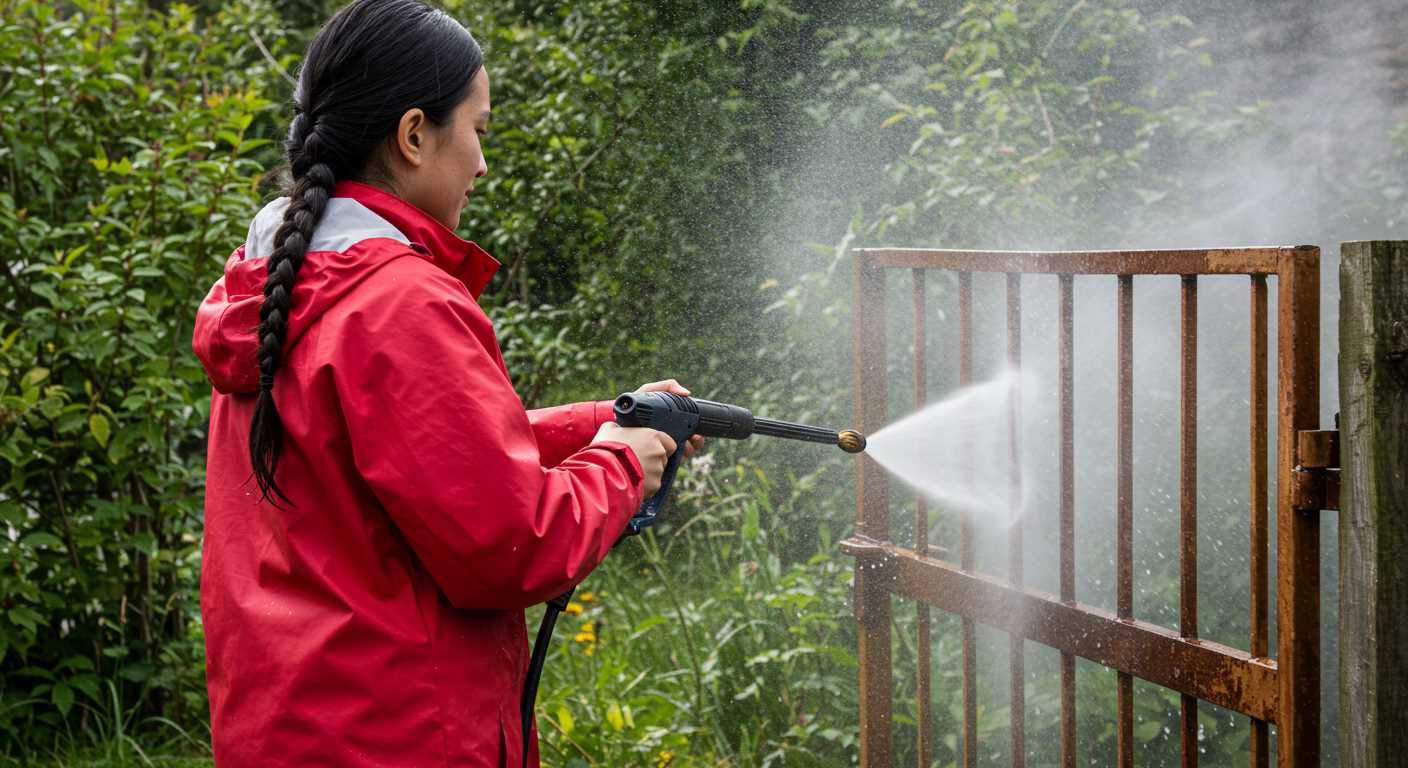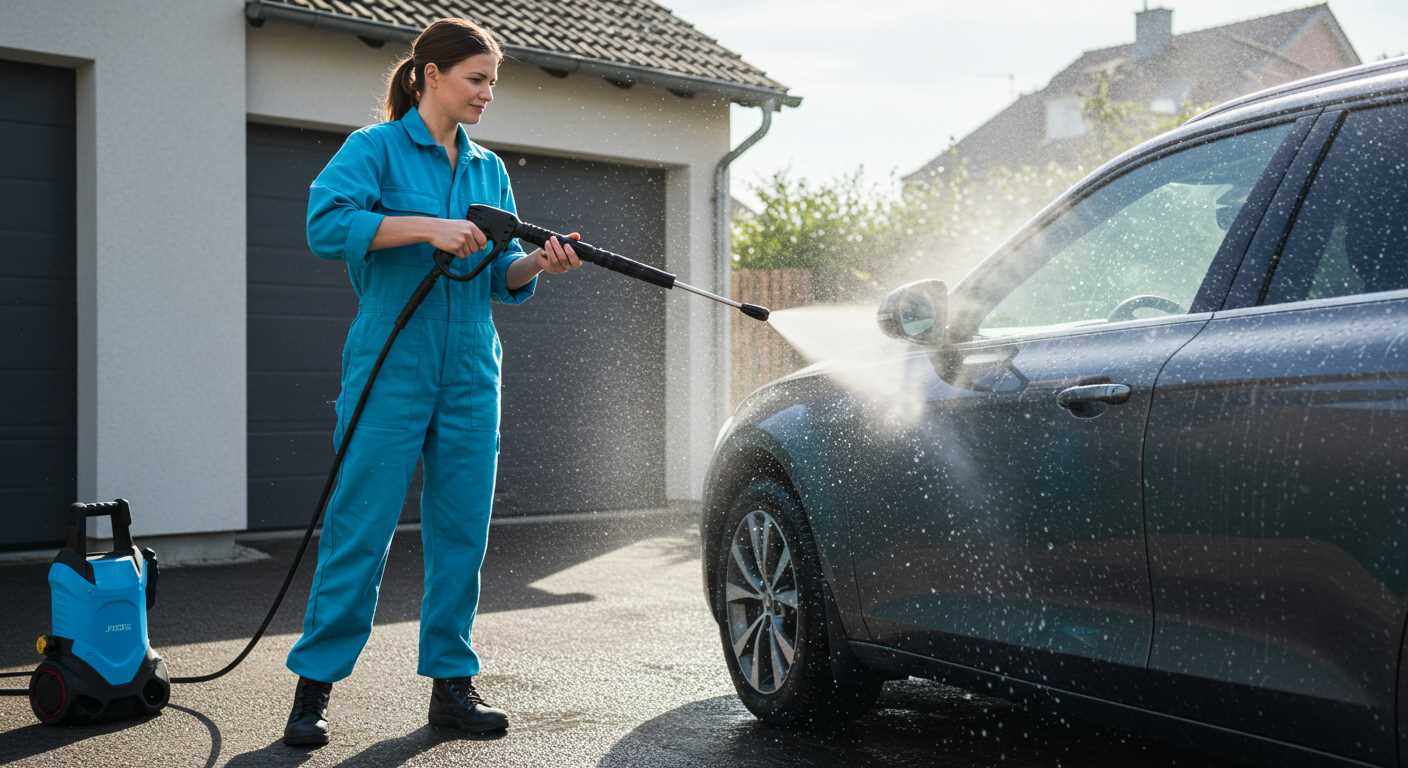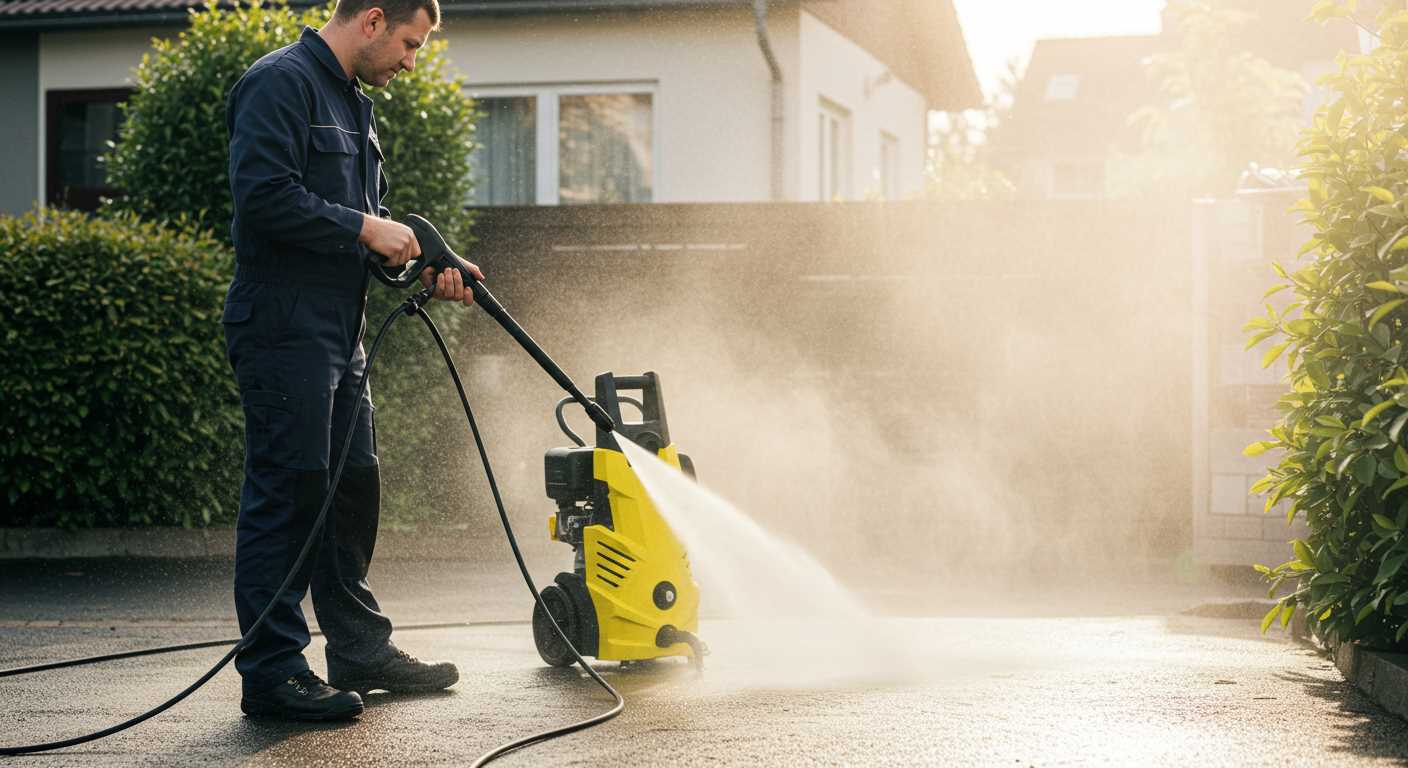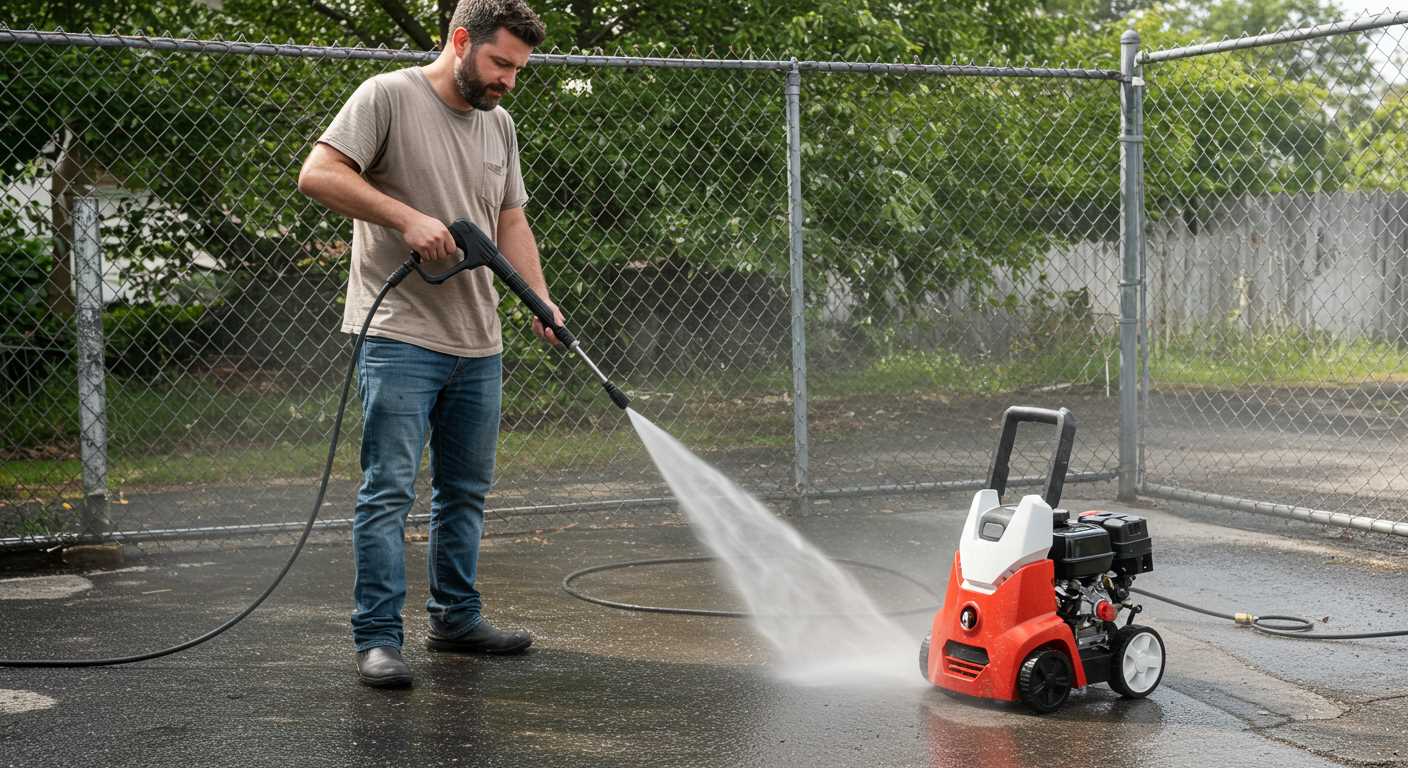



Every three to five uses, inspect the O-rings and seals for wear. Replacing worn components prevents leaks and maintains pressure efficiency. I recommend stocking spare parts to ensure quick replacements, as delays in maintenance can lead to more extensive damage.
Pay attention to the nozzle. A clogged or damaged nozzle can significantly affect cleaning performance. Regularly clean and replace it as needed, aiming for optimal spray patterns for various tasks. This small detail can enhance cleaning results and save time.
Inspect and clean the pump regularly. The heart of the equipment relies on the pump’s condition to maintain high pressure. Flushing out any debris and checking for proper lubrication extends its lifespan, ultimately saving you from costly replacements.
Always check the hoses for kinks, cracks, or abrasions. Replacing damaged hoses prevents pressure loss and reduces the risk of accidents during use. Additionally, storing the hoses properly after each use can greatly enhance their durability.
Maintenance Insight for High-Pressure Cleaners
I recommend conducting regular checks and upkeep on your high-pressure cleaning equipment to prolong its lifespan and performance. Here are some crucial areas to focus on:
1. Regular Inspection
- Examine hoses for wear and tear, ensuring there are no leaks or cracks.
- Inspect the spray gun and nozzle for blockages or damage that can affect water flow.
- Check the motor and electrical components for signs of corrosion or overheating.
2. Fluid Replacements
- Drain and refill the detergent reservoir to prevent residue build-up and ensure optimal cleaning power.
- Replace oil in gas-powered units according to the manufacturer’s specification to maintain engine performance.
Neglecting these aspects can lead to decreased cleaning efficiency and potential breakdowns. I advise setting a routine maintenance schedule to ensure that necessary checks and replacements are carried out consistently.
3. Winterisation

- In colder months, flush the system with antifreeze to prevent freezing damage.
- Store the unit in a dry place to avoid moisture-related issues.
These practices can save you significant costs down the line by addressing minor issues before they escalate into major problems.
4. Professional Check-ups
- Consider engaging a specialist for thorough inspections annually.
- Keep records of maintenance work performed for warranty validation and future reference.
By adhering to these guidelines, the functionality and reliability of your high-pressure cleaning apparatus will be greatly enhanced, ensuring it serves you effectively for many years. Regular attention is an investment that pays dividends in performance and longevity.
Understanding the Benefits of Regular Maintenance
Regular upkeep of cleaning equipment significantly enhances performance and longevity. One of the primary advantages I’ve observed is improved efficiency. A well-maintained machine can operate with optimal pressure and flow rates, reducing the time needed for any task. This results in savings on both water and energy consumption, making the operation more economical over time.
Enhanced Reliability
Preventative actions like cleansing filters and inspecting hoses can avert costly breakdowns. I’ve witnessed instances where minor adjustments and replacements have extended the lifespan of an apparatus significantly. Ensuring all components function properly mitigates the risk of sudden malfunctions, especially during heavy usage periods.
Quality of Cleaning Results

Consistent performance is key for achieving outstanding results. Utilizing a neglected device often leads to subpar cleaning, as clogged nozzles and worn-out seals diminish power. Keeping everything in peak condition ensures you achieve the desired cleanliness, whether tackling home exteriors or commercial projects.
Identifying Common Pressure Washer Problems
The most frequent issues with these cleaning tools often stem from insufficient maintenance or misuse. Begin by checking for leaks in hoses or connections. If you notice water dripping, it could indicate a loose fitting or a damaged hose that needs immediate attention.
A loss of pressure is another common complaint. This usually arises from a clogged nozzle or an obstructed filter. Regularly inspect and clean both the nozzle and filter to prevent reduced performance. If the issue persists, the pump may be failing, requiring a thorough inspection.
Motors that won’t start or abruptly shut down often indicate electrical issues. Examine the power cord for damage and ensure the outlet provides adequate power. Additionally, overheating can lead to automatic shutdowns. Allow the machine to cool down between uses to avoid this situation.
Strange noises during operation might point to mechanical failure. Listen for grinding or screeching sounds, which could indicate worn bearings or a malfunctioning pump. Addressing these problems early can prevent costly repairs.
Vibrations can also be a sign of trouble. If the unit shakes excessively, check for loose screws or an imbalanced setup. Ensure the machine lies on an even surface to maintain stability during operation.
Lastly, a build-up of debris or mineral deposits can lead to water quality issues. Regular cleaning and using good-quality water can prevent clogging and prolong the lifespan of internal components.
How Often Should You Service Your Pressure Washer?
Regular maintenance is recommended every 50 hours of usage or at least once a year, whichever comes first. For commercial use, a bi-monthly check may be necessary due to heavy usage and wear. Adjust this frequency based on your operating conditions–dirtier environments or tougher tasks may require more frequent inspections.
Always inspect the components for wear and tear before each use. If any signs of malfunction appear or performance declines, conduct a thorough assessment immediately. Listen for unusual sounds during operation; they can signal potential issues that need addressing soon.
Keep a maintenance log to track inspections and repairs. This practice helps spot patterns in problems and can aid in planning future upkeep, as well as extending the lifespan of the equipment significantly. Following a proactive approach ensures optimal performance and reliability.
Remember, not all conditions are the same. Extreme weather or heavy usage could necessitate more regular checks. Stay observant and prioritise any repairs or maintenance to avoid costly breakdowns down the road.
Steps to Inspect and Clean Key Components

Start by disconnecting the unit from the power source or water supply. This ensures safety during the inspection process.
Check the inlet filter, as debris can clog it. Remove the filter, rinse it under water, and ensure it is free from blockages. Replace it if damaged.
Examine the pressure hose for any signs of wear, such as cracks or leaks. Run your hand along the length; if it feels rough or has bulges, consider replacing it. Any leaks detected should be fixed immediately.
Inspect the nozzle and wand. Remove the nozzle and use a pin or needle to clear any obstructions. Soak it in soapy water if there’s stubborn residue. Rinse thoroughly before reattaching.
Verify the pump oil level, if applicable. A lack of oil can lead to severe damage over time. If the oil is low, top it up with the recommended type.
Check for any signs of water leakage around connections. Tighten any loose fittings you may find. This prevents water loss and maintains efficiency.
Clean the exterior casing of the machine with a damp cloth to remove dust and grime. This can help prevent corrosion and extends the longevity of the device.
| Component | Inspection Steps | Recommended Action |
|---|---|---|
| Inlet Filter | Remove, rinse, check for blockages | Replace if damaged |
| Pressure Hose | Examine for cracks, leaks | Replace if needed |
| Nozzle | Remove, clean with pin, soak if necessary | Rinse and reattach |
| Pump Oil | Check oil level | Top up if low |
| Connections | Look for water leakage | Tighten loose fittings |
| Exterior Casing | Wipe with a damp cloth | Keep clean to prevent corrosion |
Following these inspection and cleaning steps will help maintain the efficiency of your equipment over time.
Importance of Using Quality Replacement Parts
Using high-quality replacement components is fundamental for maintaining optimal functionality. Poor quality parts can lead to malfunctions, reduced performance, and a shorter lifespan of the equipment.
Benefits of Quality Components
- Enhanced Reliability: Quality parts ensure consistent operation, minimising the risk of unexpected breakdowns.
- Better Performance: They contribute to improved cleaning efficiency, allowing for more effective dirt and grime removal.
- Longevity: High-grade replacements typically outlast subpar alternatives, leading to lower long-term costs.
Cost Considerations

While the initial expense of premium parts may be higher, the potential savings on repairs and replacements make them a prudent investment. Consider the costs associated with downtime and repairs when opting for inferior components.
It’s crucial to source parts that match the original equipment specifications. Using mismatched or counterfeit components can cause irreversible damage. Always verify that replacements are compatible with the existing system.
In summary, prioritising quality in replacement parts not only safeguards your equipment but also enhances its overall efficiency. This approach leads to a smoother and more enjoyable cleaning experience.
Cost Considerations for Regular Servicing
Investing in routine maintenance can lead to significant savings over time. Ignoring upkeep often results in unexpected repairs, which can escalate quickly. For instance, a minor fix can cost around £50, while a complete overhaul might set you back £200 or more.
Budgeting for annual inspections usually costs between £70 and £120, depending on the model and service provider. This investment can help identify minor issues before they become costly problems, ensuring the longevity of the device.
Consider the downtime associated with malfunctioning equipment. Each hour of inoperability can lead to lost productivity, costing upwards of £30 to £50, particularly for commercial users. Regular check-ups help maintain operational efficiency, minimising disruptions.
Utilising quality replacement parts, although sometimes pricier, guarantees better performance and durability, reducing the frequency of future repairs. Cheap alternatives may save money upfront but often lead to more substantial expenses later on.
Finally, warranty preservation is another financial aspect to think about. Most warranties require adherence to maintenance schedules. Neglecting this can void coverage, leaving you responsible for significant repair bills.
DIY Maintenance Tips for Pressure Washer Owners
For longevity, regularly check and clean the inlet filter. A clogged filter restricts water flow, leading to overheating.
Inspect hoses for cracks or leaks every few uses. Replace them immediately to prevent pressure loss and water wastage.
Keep the nozzle clean. A blocked nozzle can cause uneven spray patterns. Use a small wire to clear any debris lodged inside.
After each use, run the machine with clean water to flush out detergent residues. This prevents clogging and preserves internal components.
Store in a dry environment, protected from freezing temperatures. If liquid freezes inside the system, it can cause significant damage.
Check oil levels if using a gas-powered model. Change the oil as per the manufacturer’s recommendations for optimal performance.
Inspect and clean the pump regularly. A well-maintained pump ensures consistent pressure and extends operational life.
Utilise appropriate cleaning solutions. Mismatched chemicals can corrode parts and reduce efficiency. Always follow the manufacturer’s guidelines.
Regularly check fittings and connections. Tighten any loose parts to prevent leaks and maintain proper function during operations.
Document maintenance tasks and dates. Keeping a simple log helps track when next maintenance is due, ensuring no steps are missed.







